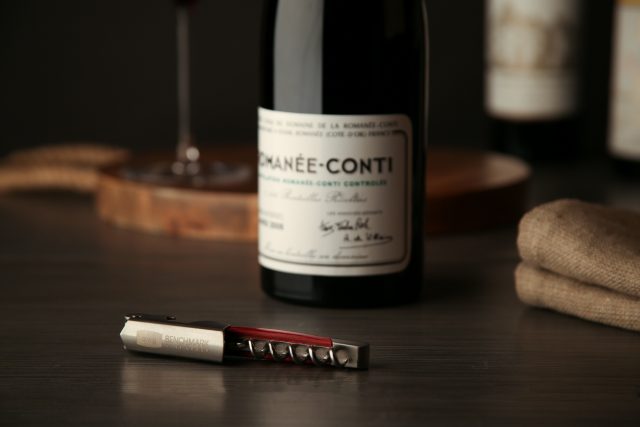Reimagining the restaurant wine list
By db staff writerRestaurants have been tested to the limits over the last two years – but remain resilient, with many transforming their wine lists to be more nimble and focused. Leading US businesses Benchmark Wine Group and Wine Access explain the elements that go into creating a successful restaurant wine list that will allows on-premise wine directors to adapt and be flexible, enhance sales and take their list into the future.

So, how do restaurants create a unique wine list that stands out and draws in business? How do wine directors find the hidden gems, as well as source inexpensive fine and rare wines that will make a restaurant wine list stand out?
We spoke with Benchmark Wine Group and Wine Access, two leading companies in the United States for restaurants looking to source top wines for their lists, to get their top tips.
Eduardo Dingler, vice president of wine for Wine Access, knows very well how much goes into creating a successful restaurant. He was the global beverage director at Morimoto for nearly a decade, and worked at some of Napa Valley’s most iconic restaurants, including Tra Vigne and Bistro Don Giovanni.
“A lot of thought, effort and capital goes into opening a restaurant, a concept, menu development and staff training,” he says. “The wine list should reflect the cuisine and ambiance and enhance it. Being mindful of the style of cuisine, budget and storage of the wine is very important to capture the patron’s attention and keep them coming back.”
He also stresses that a wine list with a range of offerings in terms of price, from attainable options to a reasonable medium bracket and some high-end offerings for those celebratory nights is essential.
Jen Saxby, Benchmark’s marketing manager, agrees. She notes that while her team can facilitate the fine and rare, back-vintage wines, they can also deliver on standout producers that transcend vineyard designations and vintages, allowing for a greater range of excellence across all price points.
“When an allocation is purchased from, for example, a First Growth Bordeaux producer, the second wines (a value in comparison) are also offered to our collectors, who then will sell them to us as they are more ready to drink than the more tannic, age-worthy First Growths which make a great spot on a restaurant wine list,” she explains.
Dingler argues that the by-the-glass list is one of the most important and relevant parts of the wine program. “Here you get to show diners your ideal pairings, and most importantly, your staff’s expertise – so make sure you keep your servers and bartenders engaged.”
Variety in terms of selection is key as well. Benchmark’s loyal collectors typically buy from the same producer on an annual basis, which results in reciprocity from the winery, offering them special bottlings and small production gems that wouldn’t be offered to a larger market or distributor.
“We are thrilled when we see these in a collection and love to offer them to our restaurant partners, sometimes a case at a time,” notes Saxby. While some distributors dictate terms to maintain control, Benchmark is happy to offer anything in their inventory, and provides their restaurant partners a first look when the collection arrives.
Dingler also notes that having a range of wines, including more common brands is very important. “Some guests need help feeling at home, so well-known brands are as essential as esoteric producers. This applies to varieties as well: Chardonnay, Sauvignon Blanc, Pinot Noir and Cabernet Sauvignon are as important as Grüner Veltliner, Ribolla Gialla, Gamay and Refosco.”
Think about keeping it exciting, adventurous and educational at the same time.
“There is nothing more memorable than trying new things that expand guests’ horizons,” Dingler argues. “When possible, taste new dishes and ingredients with your team and make it interactive and fun. It will go a long way on the floor when talking to guests.”
To that end, Wine Access extends the customer restaurant experience at home with its Michelin Prestige Wine Club. As the official wine provider of the Michelin Guide, Wine Access has teamed up with restaurants featured in the Michelin Guide to curate a selection of rare wines from some of the world’s best wine lists.
Benchmark finds that taking a personal approach to working with their restaurant customers goes a long way. They often ship nationwide for last-minute requests from guests coming in to dine. This in turn strengthens the restaurants’ customer loyalty.
David Parker, CEO and Owner of Benchmark, recognises that adaptability is key in the restaurant wine industry.
“We’ve been helping the top restaurants in the country distinguish themselves with rare, perfectly aged and unusual wines since 2002,” he says. “We helped restaurants get through the pandemic by acquiring portions of their cellars and are now helping them restock. It provides a perfect opportunity to recreate their list for current tastes.”
Adaptability, flexibility, variety and a personal touch, then, are the keys to developing a successful wine list that will work for both the restaurant and, ultimately, the customer.
Related news
Scaling up organics: the realities behind going big without chemicals
Libiamo! Christie's curates wine auction for Royal Opera House
